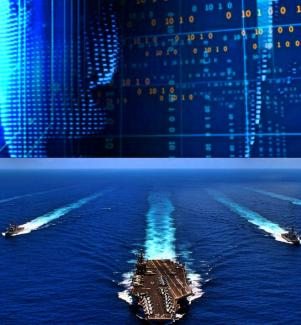Artificial Intelligence and Maritime Domain Awareness
At last, human conscience has taken precedence over commercial interests. This was lately seen in a bold move by the multinational giant Google. Goggle has decided to shelve Project Maven, a U.S. Department of Defense (DoD) program for development of drones, which uses artificial intelligence and machine learning technology to help analyze huge amounts of captured surveillance footage. This came as a great relief to nearly 4000 company employees as well, who had called upon the leadership not to develop technologies that would involve the company into the ‘business of war’.
Sundar Pichai, Google CEO, in a blog post recently stated, “As a leader in AI, we feel a deep responsibility to get this right” and the company would withdraw from Project Maven and not develop in future “technologies that cause or are likely to cause overall harm”, those which “violate internationally accepted norms,” and “widely accepted principles of international law and human rights.” He also listed seven principles that would guide Google’s future research and product development and business decisions. Also, four ‘No’ have been listed: (a) Technologies that cause or are likely to cause overall harm; (b) Weapons or other technologies whose principal purpose or implementation is to cause or directly facilitate injury to people; (c) Technologies that gather or use information for surveillance violating internationally accepted norms; and (d) Technologies whose purpose contravenes widely accepted principles of international law and human rights.
The blog post further clarifies that Google, however, will continue work with governments and collaborate with the government and the associated departments and work to “keep service members and civilians safe”. Google’s future priority areas include developing AI based technologies for the military in “cybersecurity, training, military recruitment, veterans’ healthcare, and search and rescue.”
There are several disruptive technologies that find application in the maritime domain beyond warfighting. Among these Artificial Intelligence (AI), its cutting edge application in machine learning (ML), internet of things (IOT), big data, and blockchain can profoundly change the management of the maritime domain, including search and rescue, humanitarian assistance and disaster relief, combating illegal, unregulated and unreported (IUU) fishing, counter piracy, counter trafficking, environment protection and illegal migration, to name a few.
A robust AI based maritime domain awareness (MDA) can potentially contribute to transparency across the seas and oceans by integrating multi-source data, analytics and advanced Cloud services making data accessible much more easily. It is possible to track vessels, determine the type of cargo and even the business behavior of shipping companies, including freight forwarders.
An ideal AI-based MDA architecture could be built around numerous diversified technical devices and systems such as radar (ships, aircraft, shore), vessel monitoring systems (VMS), satellite supported systems (AIS and LRIT), UAVs, drones, imagery, open source intelligence (OSINT), etc. to generate data. Thereafter, advanced algorithms fuse data from different sources including data from vessel profile library developed from stored knowledge and provide automated threat evaluation or early warning on anomalous activities at sea, understand and quantify risks, and provide timely alerts of possible threats or suspicious ships before reaching their destinations. In essence, this helps to minimize information gap, thus limiting the number of vessels that require investigation.
The fishing industry, which has in recent times been under suspicion for engaging in IUU activities, can be monitored and tracked. AI enabled drones can recognize the identification number of the fishing vessel, count people on board, determine if it is inside a protected area and verify its permit. Google is already using the image-recognition technology in conjunction with AI to locate vessels engaged in IUU activity.
As far as search and rescue at sea is concerned, navies and coast guards are often pressed into operations to rescue fishermen during cyclones and hurricanes. It will be possible in the future for ships to launch autonomous vehicles to respond to emergencies to help locate and rescue victims that have been left stranded, immobile or are sinking.
Another interesting application of AI enabled drones is their use in safety of beach goers against sharks. For instance, in Australia, shark detection system powered by artificial intelligence will be able to deliver “live-video feed to a drone operator who then uses the shark-spotting software to identify sharks in real time and with more accuracy than the human eye.”
The maritime domain is in the cusp of a major transformation and disruptive technologies will be advanced to overtake the skill, ability and judgment of humans. The trends indicate that that day is not far when artificial intelligence would overtake human intelligence and smart tools will enable technology-driven management of information and intelligence and provide a comprehensive and credible real-time MDA.
So long as these transformations do not challenge the natural human values of empathy and compassion, they are welcome and must be harnessed to address and respond to illegal activities that challenge good order at sea. In this context, Google’s decision to abandon Project Maven is a welcome decision and is a trigger for exploiting disruptive technologies to deliver public goods and services at the seas.
